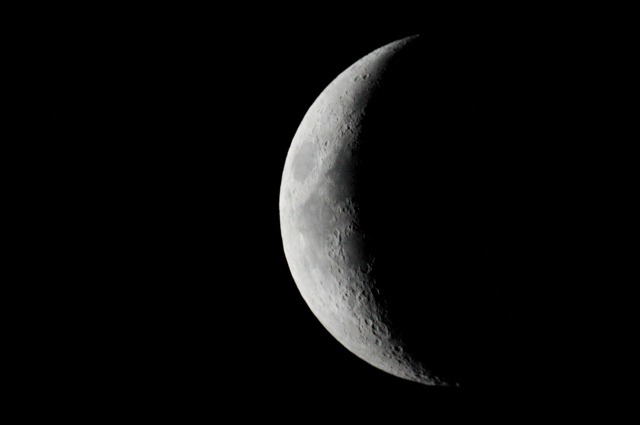|
|
ORACLE OBSERVATORY
Last updated: 14 June 2005 |
|
|
11-12 June 2005
The weather forecast for 11-12 June was "Clear" so I packed up the Toyota Prius Hybrid with my ETX-90RA and took off on Saturday morning. When I arrived it was very clear with some scattered clouds on the Northern Horizon. I set up "Oracle Observatory", seen here:

I took the ETX-90RA for the purpose of doing piggyback astrophotography with my Nikon D70 DSLR. You can see the camera mounted on the ETX in the above photo.
As the Sun set, the skies remained basically clear (unlike the last three trips!):

The Moon was a nice crescent, seen near the top of this photo. It was great to have something to view as I waited for twilight to end!

I even took a couple of photos of the Moon through the ETX-90RA using the D70 DSLR with the Scopetronix Prime Focus Adapter. The second photograph added a 2X Barlow Lens.


While the skies were clear there was a very strong breeze, which is slightly evident in the larger image as some blurring. Unfortunately, this breeze ruined all my attempts at prime focus photography of Venus, Saturn, and Jupiter.
Well, the skies were clear until about 2130 when those clouds on the Northern Horizon had managed to come down South to visit me! By 2245 it was totally overcast! So much for my plans to do piggyback photography. I decided to catch some sleep.
I woke up at midnight and the skies were very clear again, with only some scattered clouds way to the South. They didn't seem to be coming my way so I set up to do the piggyback photography with the Nikon D70 DSLR mounted on the ETX-90 using my JMI piggyback adapter. I manually tracked a guide star using the Rigel System PulsGuide reticle eyepiece and the Scopetronix Microstar II+ controller (no longer available). Tracking was easy and accurate.
First up was the heart of the Milky Way in Sagittarius.

Then I did the Milky Way in the area of the "Summer Triangle". Can you pick out the Summer Triangle stars Altair, Deneb, and Vega in this sea of stars?

By about 0200 hours, M31, the Great Andromeda Galaxy had risen high enough to try it in a piggyback photo. For this photo I used the full telephoto setting (70mm; equivalent to 105mm on a 35mm camera) on the D70. You can easily see the nucleus of the galaxy with a hint (in the original) of the rest of the galaxy. I do plan to work more on capturing M31 piggyback on future trips to Oracle Observatory.

Details on these and other piggyback astrophotographs taken on this trip are discussed on my Nikon D70 DSLR astrophotography page.
I decided to call it a night about 0300 since I had to drive the eight hours back home later that same morning.
I should also mention that, as expected, the "Blinky" lights for the tripod were definitely a must have for this dark site.
This was a very enjoyable and productive trip to Oracle Observatory, even with the scare of the clouds.
The next trip is tentatively planned for 2-4 July. Yes, two nights! Stay tuned...
Return to the top of this page.
Return to the Oracle Observatory Main Page.
Go to the ETX Home Page.
Go to the LXD55 Home Page.